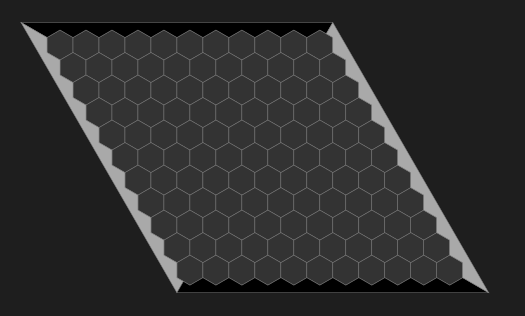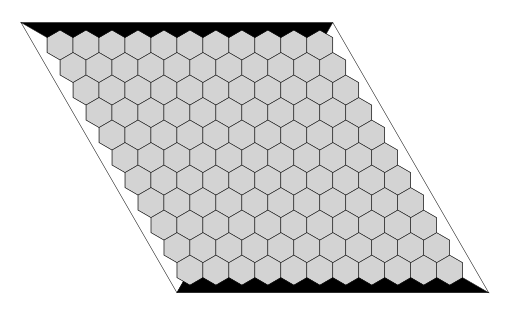Hex


Usage
or you can directly load Hex class
Description
Hex is a two player abstract strategy board game in which players attempt to connect opposite sides of a rhombus-shaped board made of hexagonal cells. Hex was invented by mathematician and poet Piet Hein in 1942 and later rediscovered and popularized by John Nash.
Rules
As the first player to move has a distinct advantage, the swap rule is used to compensate for this. The detailed swap rule used in Pgx follows swap pieces:
"Swap pieces": The players perform the swap by switching pieces. This means the initial red piece is replaced by a blue piece in the mirror image position, where the mirroring takes place with respect to the board's long diagonal. For example, a red piece at a3 becomes a blue piece at c1. The players do not switch colours: Red stays Red and Blue stays Blue. After the swap, it is Red's turn.
Specs
| Name | Value |
|---|---|
| Version | v0 |
| Number of players | 2 |
| Number of actions | 122 (= 11 x 11) + 1 |
| Observation shape | (11, 11, 4) |
| Observation type | bool |
| Rewards | {-1, 1} |
Observation
| Index | Description |
|---|---|
[:, :, 0] |
represents (11, 11) cells filled by player_ix |
[:, :, 1] |
represents (11, 11) cells filled by the opponent player of player_id |
[:, :, 2] |
represents whether player_id is black or white |
[:, :, 3] |
represents whether swap is legal or not |
Action
Each action ({0, ... 120}) represents the cell index to be filled.
The final action 121 is the swap action available only at the second turn.
Rewards
Non-zero rewards are given only at the terminal states. The reward at terminal state is described in this table:
| Reward | |
|---|---|
| Win | +1 |
| Lose | -1 |
Note that there is no draw in Hex.
Termination
Termination happens when either one player connect opposite sides of the board.
Version History
v0: Initial release (v1.0.0)
Baseline models
Pgx offers a baseline model for Hex. Users can use it for an anchor opponent in evaluation. See our paper for more details. See this colab for how to use it.
| Model ID | Description |
|---|---|
hex_v0 |
See our paper for the training details. |